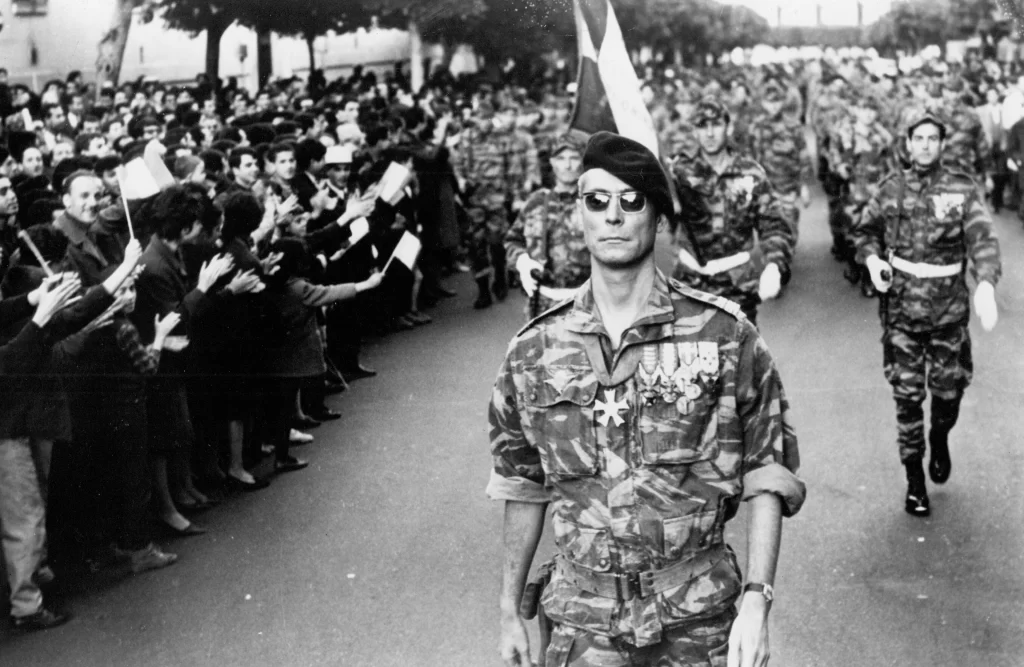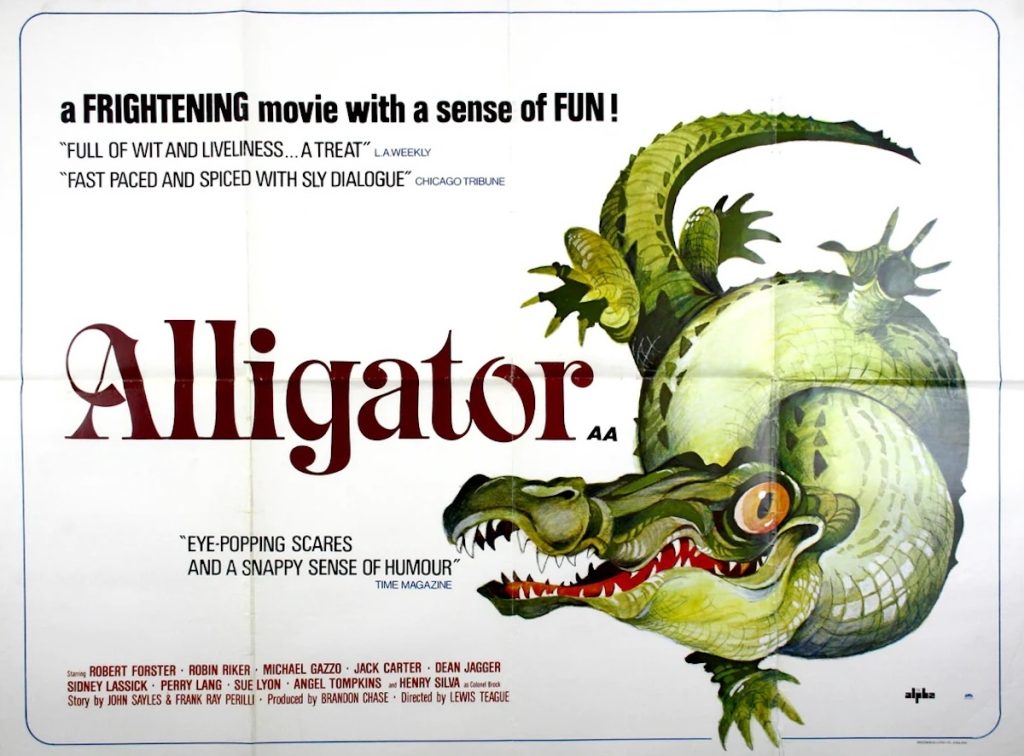There’s a great throwaway gag early in Paul Thomas Anderson’s One Battle After Another during which Leonardo DiCaprio’s washed-out radical Bob Ferguson crashes on the sofa getting high and watching The Battle of Algiers. Gillo Pontecorvo’s 1966 masterpiece about the insurgency that led to the liberation of Algeria would have been an obvious favorite of the character and an aspirational text for his ragtag crew of guerilla activists, now underground and on the lam after the Anderson film’s thrillingly Pontecorvo-influenced prologue. The Battle of Algiers is used as a shorthand punchline, serving the same purpose as the vintage equipment from Steely Dan’s recording studio that Bob babbles about in the previous scene (“you know, that sort of crackling tube sound”) as the detritus of this couch potato dad’s former life.
But the movie itself remains far more vital than the zonked character watching it, still as exciting as any action picture ever made, though with significantly more moral and historic weight. Pontecorvo said he wanted the movie to feel like “a stolen historical document” and his groundbreaking appropriation of newsreel techniques blurs the lines between documentary and fiction filmmaking to dizzying effect. Some early release prints came with a title card disclaimer up front informing audiences that no actual news footage was used in the picture, and everything they would be watching was staged. That’s still kind of hard to believe.
It’s raw, roaring, incendiary work of art, shattering in its immediacy. The film follows the exploits of the National Liberation Front (FLN), an Islamic Algerian group trying to shake off the yoke of French imperialism with a brutal campaign of domestic terrorism in the capital city. What’s remarkable is Pontecorvo does not sentimentalize nor make any special pleas on behalf of his heroes. They kill innocent people. Lots of them. The French army retaliates, of course, seeking to restore order by any means necessary. It’s a movie of vicious, tit-for-tat escalation, ending with the army blowing up an entire building to kill a single insurgent and his family. The scene was shot on the exact spot where the real-life insurgent, and protagonist of the picture, Ali la Pointe, was killed just a few years before. The production re-built his home, then blew it up again.
The movie’s overwhelming sense of verisimilitude was no doubt assisted by the presence of Saâdi Yacef, a leader of the FLN who became an Algerian senator after the country achieved its independence. Yacef helped produce the picture, which is based on his memoir. He also co-stars as Djafar, a character inspired by his own experiences during the war. Pontecorvo cast almost exclusively non-professional actors, grabbing people whose faces he felt would be compelling on camera and coaching them into situations where they didn’t have to act all that much. Sometimes he did upwards of 50 takes, exhausting the novice performers to a point where all their self-consciousness in front of the camera was gone and they merely behaved as they normally would.

And what an incredible array of faces he found! The snitch we see in the opening scene was in fact a real petty thief; Pontecorvo spotted him in a prison and loved his look, so Yacef pulled strings to get the guy out long enough to shoot his scenes. (I wonder if he ever saw the movie?) The only trained thespian is stage actor Jean Martin playing the ruthless French Colonel Mathieu, who oversees the film’s most grueling torture sequences. He’s neither a moustache-twirling villain nor some mad nationalist ideologue, but rather a plain-spoken pragmatist who understands this is the cost of colonialism and is simply carrying out his sworn duty, however unpleasant it may be.
The toll of their actions weighs heavily on these characters. I often think about the scene before a café bombing, in which the woman leaving the package takes a moment to look around and observe all these civilians chatting over coffee and cocktails. They have no idea they’ll be dead in a few minutes. But she does, and we in the audience do as well. We must all sit with that knowledge together for a few beats before the explosion. I can’t think of many political movies that would stop during a scene like that, to acknowledge the victims and the terrible cost of violent revolution.
I first saw The Battle of Algiers when it was re-released in 2004, right around the time the Iraq insurgency was making it clear that Dubya’s “Mission: Accomplished” photo op was more than a little premature. There had famously been a screening at the Pentagon in 2003, but I guess nobody there paid much attention. Yet if Pontecorvo’s film didn’t have much effect on U.S. policy, it nonetheless changed the way movies are made, creating a new cinematic language of handheld realism and gritty, you-are-there immediacy. If you squint really hard while you’re watching it you can see William Friedkin’s career being born, and it’s hard to imagine where directors like Oliver Stone and Steven Soderbergh would be without The Battle Of Algiers.
As our mad king wonders which American city to invade next, desperate to use this country’s armed forces against its own citizens, one wonders if it might not be time for another Pentagon screening? Alas, it’s difficult to envision members of this administration sitting through a black-and-white movie with subtitles.
“The Battle of Algiers” is streaming on the Criterion Channel, Kanopy, and HBO Max.



